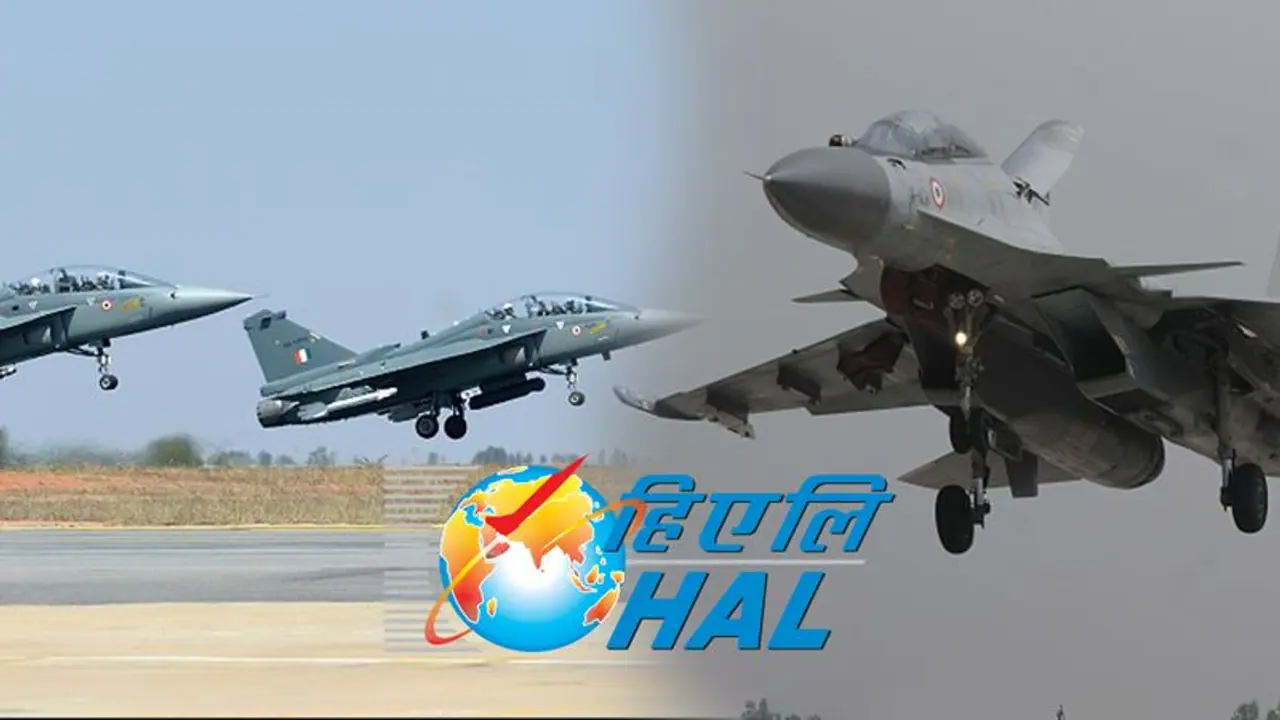There has to be a reason for the government and the Indian Air Force's impatience with the HAL. The real problem for the HAL has been its declining efficiency and repeated failure to meet deadlines.
Congress president Rahul Gandhi, in an interaction with Hindustan Aeronautics Limited (HAL) employees last year, said the Modi government had "insulted, hurt and destroyed" the future of the public sector undertaking, shutting it out of the Rafale offsets contract.
“If somebody thinks they can build their future on your (HAL) graves that won’t be allowed... We are going to protect your future," Rahul told the HAL employees. The narrative that Rahul tried to build was one of the Modi government favouring its 'favourite' private player (read Anil Ambani's Reliance Defence) in the Rafale deal to the detriment of a "strategic asset" and "a temple of modern India" (mark the unmistakable Nehruvian influence in the 'temple' reference). The narrative was that the Modi government emasculated a top-rung Indian company that the United Progressive Alliance (UPA) had supported and nurtured.
Record turnover no sign of an ignored PSU
The reality, however, is different. The HAL has announced a record turnover of over Rs 19,400 crore for 2018-19. That is a 6% jump over the previous year's turnover of Rs 18,284 crore. This rate of revenue growth in 2018-19 was far higher than the 3.8% hike in 2017-18.
According to a HAL statement, in 2018-19, the defence PSU made 41 new aircraft that included 11 Sukhoi-30MKIs, seven Tejas light combat aircraft (LCA), as well as five Dornier-228 aircraft, three Cheetal light helicopters and 15 Dhruv advanced light helicopters (ALHs). The HAL also built 98 new engines and overhauled 213 aircraft and 540 engines in FY18-19.

The Sukhoi-30 MKI. Getty Images
Additionally, the HAL has also overhauled 15 Sukhoi-30MKIs (up from 11 the previous year), a large number of Mirage 2000 and Jaguar fighters, Kiran trainers and several helicopters.
The PSU is also working on the Tejas Mark 1A fighter and expects to certify the HTT-40 basic trainer aircraft this year. The HAL expects an 'excellent' MoU rating from the government, for "maintaining all relevant parameters related to its performance".
Modi govt not to blame
So the argument of the Modi government stalling the progress of the HAL doesn't hold water if the company's revenue numbers and projects handled are taken into consideration. The Congress's discomfort, therefore, seems to be solely focused on the HAL being excluded from the Rafale deal. That is then used to claim that the BJP government is not interested in keeping the HAL afloat.
Uncertain future
In about two years or so, the HAL is expected to deliver all the 222 Sukhoi-30 MKIs that are on order. But what next? The Sukhoi-30 MKI project is lucrative for the company as it makes Rs 4,000-5,000 crore annually from building about a dozen fighters. The company needs cash infusion to meet its monthly running expenditure of Rs 1,300-1,400 crore.
The Indian Air Force (IAF) owes the HAL about Rs 20,000 crore in unpaid dues for aircraft delivered and overhauled and for milestone payments due, according to a report.
Govt, IAF losing faith
Many would, therefore, claim that the HAL, despite its robust numbers, is staring at a gloomy future and the Modi government has done nothing to address that. It scrapped the Medium Multi-Role Combat Aircraft (MMRCA) contract in 2015 and opted for limited off-the-shelf purchase. As a result, the HAL lost the chance to produce 108 Rafale jets as envisaged earlier. The defence ministry also pulled out of the PAK-FA fifth generation fighter aircraft (Su-57) project. These were big blows for the HAL. The HAL had offered 40 Su-30MKI fighters at Rs 100 crore less, but the IAF was not interested.

Tejas multirole light fighter aircraft developed by Hindustan Aeronautics Limited. Getty Images
Between 2004 and 2014 (under UPA-1 and 2), the HAL received orders worth Rs 1.06 lakh crore. Su-30MKIs, engines, light combat aircraft, Hawks, Dorniers, Jaguars and Mirage upgrades and advanced light helicopters were on the order list. However, according to an October 2018 report, under Modi (2014-18), the defence PSU received orders worth only Rs 26,570 crore.
Delays, delays and more delays
There has to be a reason for the government and the Air Force's impatience with the HAL. The real problem for the HAL has been its declining efficiency and repeated failure to meet deadlines.
Also read: 5 institutions that ensured Rahul’s Rafale allegations did not take off
The delivery of 44 Su-30MKIs has been delayed by three years and that of 40 LCA Tejas Mark-1 by five years. The Mirage upgrade and Jaguar modification have been delayed by two and six years respectively. This is coupled with unrealistically high cost of equipment and spares.
These projects were crucial in replenishing the IAF's depleting squadron strength, which is down to barely 31, against the ideal of 42. The squadron strength is expected to fall below 30 this year, if timely procurements are not done.

HTT-40 trainer aircraft developed by Hindustan Aeronautics Limited. Getty Images
An IAF fighter squadron contains 18 aircraft, with three in reserve. It had a 3:1 advantage over the Pakistan Air Force (PAF) in terms of the number of aircraft, but the depletion in IAF's squadron strength has meant that its advantage over the PAF has shrunk to 1.4:1 at present. With the sanctioned strength of 42 squarons, this advantage will rise to 2:1, but India may not get the full quota of squadrons until 2035.
It was reported last year that the IAF, fed up with an inordinate delay in the delivery of the Intermediate Jet Trainer (IJT) Sitara, was looking to scrap the programme.
The HAL had been working on the project since 1999. The Sitara would have replaced the existing Kiran trainer jets, which are to be phased out soon, and the delay has led to a loss of Rs 3,000 crore for the IAF. The IAF had paid around Rs 4,800 crore to the HAL for the development of the Sitara. The crashing of an IJT at the Aero India defence show in 2011 raised questions over their safety as well.
Bungling on safety
The Comptroller General of Defence Accounts (CGDA) also found that Hawk trainer jets assembled in India by the HAL were fitted with inferior engines and 'category B' or 'second-hand components'. The report also revealed that commission worth Rs 500 crore were paid to middlemen, which seriously compromised with the quality of these trainer jets.
Avoided even by foreign vendors
Not only the Indian government and the Air Force, foreign vendors have avoided the HAL as an industrial partner. It has lagged way behind private players in bagging offsets contracts from foreign vendors. Thus, the state-run defence manufacturer has been able to get less than five percent of the $10 billion offsets generated in the aerospace sector.
UPA offered little help
Defence minister Nirmala Sitharaman had also pointed out that a reason HAL missed out on the Rafale contract was because it could not reach an agreement with original manufacturer Dassault during UPA time and the Manmohan Singh government did nothing to facilitate an understanding.
Inefficiency, lack of competition
The HAL is also dogged by paltry investments in research and development and lack of competition, which have allowed it to continue its 'inefficient' ways. The HAL, therefore, before claiming to have "maintained all relevant parameters related to its performance", must introspect. It has to blame itself for its uncertain future, rather than blaming the Modi government.
